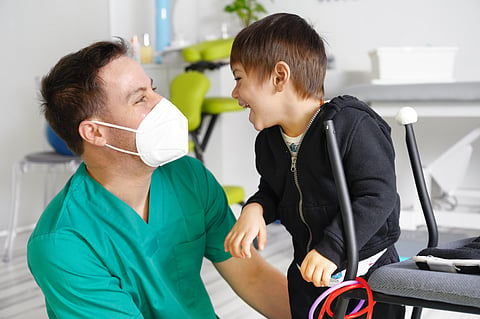MONDAY, June 12, 2023 (HealthDay News) -- For boys with cerebral palsy (CP), the presence of lower limb spasticity (LLS) is associated with orchidopexy risk, according to a study published online June 7 in Developmental Medicine & Child Neurology.
Eric M. Bortnick, M.D., from Boston Children's Hospital, and colleagues examined the association between the presence and severity of LLS and the risk for orchidopexy for cryptorchidism among people with CP. The Pediatric Health Information System database was queried for male patients with CP, stratified into those with and without LLS.
A total of 44,561 boys with CP were identified. The researchers found that 1.6 percent underwent orchidopexy (median age, 7 years and 8 months). Compared with the absence of spasticity, the presence of LLS was significantly associated with a higher orchidopexy rate (odds ratio [OR], 1.33; 95 percent confidence interval [CI], 1.10 to 1.59). Among the 7,134 patients with LLS, the intervention was significantly associated with an increased rate of orchidopexy (for injection procedures: OR, 2.47; 95 percent CI, 2.27 to 6.39; for the surgical procedure: OR, 2.60; 95 percent CI, 1.22 to 6.76). There was a significant association for LLS groin proximity with a higher orchidopexy rate (OR, 2.52; 95 percent CI, 1.42 to 4.96).
"While we are unable to definitively determine the reason for the association using this database, the associative effect is strong, and it may be related to affected muscles in the groin or the muscles attached to the testicle itself," Bortnick said in a statement. "Ultimately, it is important that for these boys, where other medical complexity is present, to make sure to continue to perform the testicle exam at check-ups to confirm that cryptorchidism isn't present."
Abstract/Full Text (subscription or payment may be required)


